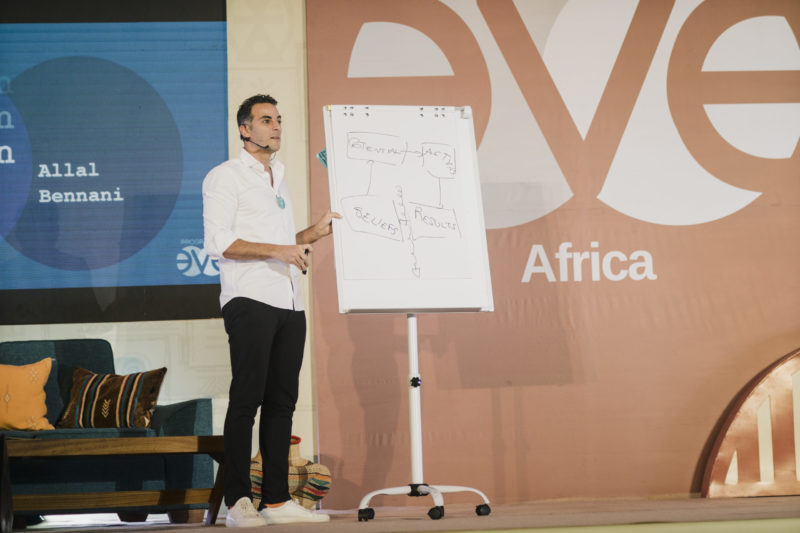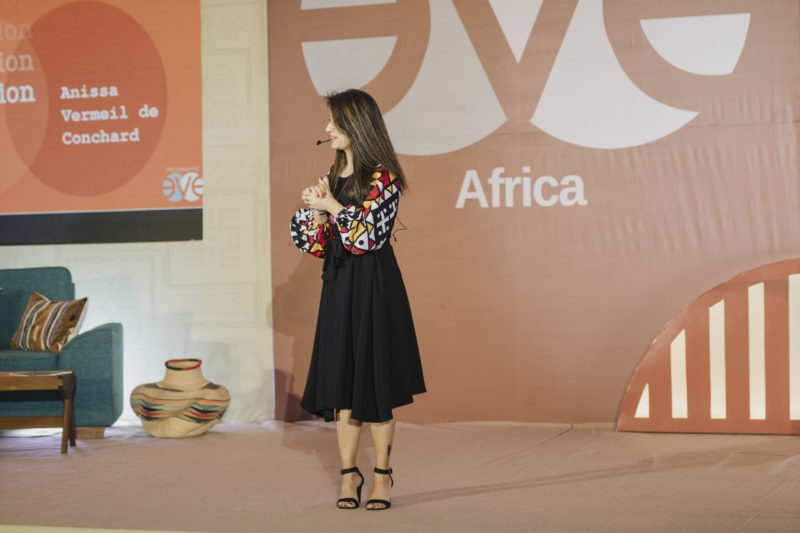“Be the change you want to see in the world.” Gandhi’s famous words could be a motto for the movers and shakers of this world, AKA “change makers”. But who really are these people who want to help the world go in the “right” direction? What do they want to achieve? How do they think they can achieve it? The EVE webmagazine investigates.
Is a change maker a social entrepreneur?
The Ashoka principle
Bill Drayton, founder of the Indian NGO Ashoka in 1980, is said to have coined the term “change maker”. During his time as a student at Harvard fifteen years earlier, Drayton launched the Ashoka Table dinner initiative, which involved political, economic and religious leaders answering questions from students about the world as they saw it. The name of the project derives from Sanskrit, and means ‘the absence of sadness’. It was also the name of a third-century emperor during India’s Maurya dynasty. Ashoka is remembered as the first pacifist leader: he brought prosperity to his kingdom by transforming its society and culture and encouraging respect for all communities. He brought about solidarity between rich and poor, and encouraged trade as an alternative to wars.
Drayton learned about Ashoka’s ideology through his admiration for Mahatma Gandhi, who also cited the emperor of ancient India as one of his sources of inspiration, as well as the author Leo Tolstoy and the artist and economist John Ruskin. Also influenced by Martin Luther King, Drayton gradually became certain that peace and prosperity must go hand in hand, and bring about justice and solidarity, empowerment fellowship, trust and hope. He was also driven by the belief that everyone can play a part in transforming the economy and society in a positive way.
When he graduated, Drayton spent a few years working for McKinsey, then the US Environmental Protection Agency before embarking on his large-scale project: an NGO that would bring together everyone involved in social innovation, with a view to implementing initiatives to transform behaviors, production and distribution models, even entire social structures. Ashoka was founded, and media coverage for the NGO helped to popularize the term “social entrepreneur”.
Social entrepreneurs, new-generation value creators
In actual fact, Drayton wasn’t the first to use the term “social entrepreneur”: its first occurrence dates back to 1972 when it was suggested by the sociologist Joe Banks while he was working on how the responsibilities of “social workers” had evolved in the America of the 1930s. During the seventeenth century, social workers were charitable people. They became activists during the nineteenth century, and public servants after the Great Depression. And in the future, as Banks has been saying since the 1960s, they will be entrepreneurs. That is to say an economically measurable, global creator of value, whose social impact is tangible and has the power to transform uses, behaviors and cultures.
Change making in action
The pillars of social innovation
This vision of social entrepreneurship spotlights the three pillars of change making:
- Proceed differently & innovatively: revolutionize production and distribution methods as well as governance and leadership, management, stakeholder relationships, and so on.
- Unlock the value that is created and share it equally: think of the company as an ecosystem, taking into account the status, interests, needs and rights of everyone involved. It’s especially important to make sure that everyone is properly recognized and rewarded for their involvement in a project.
- Trigger positive energy: be more than just an example for others; lead them as they play their own roles in the process. Be a role model by empowering the less privileged and influencing the dominant groups so they that too can evolve.
Does social innovation mean a social economy?
With these types of change makers, social innovation is by definition widespread: it covers all areas of business, all sectors, all types of organizations; everyone is invited to the table of change. But in fact, change making quickly became sectorial and the social economy emerged.
As the precursor to the cooperative movement (which from the Industrial Revolution presented a third pathway, an alternative to Smithian liberalism and Marxist socialism), the main characteristic of a social economy is a system of governance and work organization that is different from a hierarchical structure, and based on a distinction between capital and labor. So that includes associations, mutual benefit companies, cooperatives, sole traders, etc.
Another key criterion that defines a social economy concerns the organization’s objectives: to work in the general interest, serving all stakeholders. In practice, this sector includes all the services that strive to reduce inequality, provide access to healthcare, education and food, protect the environment, support local economies and fair trade, etc.
The social economy sector now encompasses more than 100 million paid positions worldwide, including 47 million in the OECD area, 15 million in Africa, 11 million in Europe and almost as many in North America, 3 million in Brazil, and so on. And it’s here to stay: the ILO predicts that 24 million jobs will be created in the green economy as early as 2030.
Revitalizing the “traditional” economy
The dynamism of the social economy, buoyed partly by the need for meaning at work, which is so precious for the new generations (and they’re not alone), might suggest that a massive social innovation movement is under way.
But pigeon-holing the idea of change making into a specific sector might actually be not seeing the wood for the trees: the vast majority of companies still operate using patterns that are firmly rooted in traditional industrial culture: a vertical management structure, relationships with their ecosystem that are tainted by power struggles, and a vision of performance that ranks financial profit higher than overall value. Even though the urgency to transform this model is clear for all to see, even though we know that to perform well we need to innovate and bring about enormous cultural change, even though the desire for a “new” type of business and a “different” approach to life at work is obvious to most players in the business world, people that actually try to make that change happen come up against some tough opposition. And that’s where the change makers in all of us can step in!
Can we really all be change makers?
Free your inner change maker…
Change making is more than just a sector, it’s an attitude, a position, and above all, action! In other words, every one of us can be a change maker:
- Start by changing yourself: question your convictions, your habits, your conditioned reflexes, what you believe in, your magical thinking and other benchmarks; question your fears and what is holding you back, so you can pinpoint how to eliminate them; clarify your values to make them the motivations for your actions; develop your social skillsand emotional intelligence (soft skills) to improve your relationships with other people and the world around you; look at life from a new perspective (empathy, curiosity, etc.) and give yourself the courage to take risks and put yourself “out there’ (because change is often upsetting to others).
- Imagine alternatives to existing behaviors: other ways of looking at issues, organizing, finding resources, communicating, exchanging, dealing with partners, reaching and engaging your “targets”, and so on.
Never take your eyes off your values and objectives, but give yourself a chance to find solutions where you wouldn’t have thought to look (serendipity!), treat each obstacle as an opportunity to innovate, dare to take the road less travelled (even if you can’t see a clear path ahead), and conquer new lands.
- When you strive to learn from everything you do, like those who teach themselves, you begin to understand that each experience, each encounter, each time you discover an idea, a practice, a sensation or an emotion can be an opportunity to find inspiration, generate other ideas, understand things, and acquire skills. Even (and especially) when something seems insignificant or downright useless, it might be the starting point for a project that could bear fruit in the future.
- By taking action withothers (and not for others), you can shake off the role of the all-knowing, all-seeing boss, who is only there to give, and others to take. And focus on fellowship and companionship, be a good “teammate” in your collective educational adventure, listen to differing opinions as well as those that validate your own. Always seek to involve each member of a group and make sure that everyone is in contact with as many people as possible so that various points of view can be brought to the table, and skills can be combined…
… in an environment that encourages everyone to be change makers
Change making is great! But how is it possible to make change happen in resistant environments and deep-rooted processes, where habits have set in and people are clearly defiant? It’s a huge challenge for social innovation: it shouldn’t be up to powerless individuals to change the context in which they operate and rewrite the dominant rules of the game. It’s also clear that organizations need to be instrumental in allowing change makers to emerge and giving them a chance to flex their transformative muscles. These organizations must:
- Provide a framework: that might sound a little counterintuitive when we’re really trying to think outside the box. In this case it’s not really about laying down a contractual structure to define a perimeter, but rather about setting up a kind of partnership charter that sets concerted objectives (and not processes to be followed) and a code of ethics to determine the values and the spirit in which the change making should take place (making sure that the end doesn’t always justify the means, but without imposing formal prohibitions and excessively restrictive obligations).
- Give permission: as well as being encouraged to dare, the organization must inspire genuine trust in these change makers. That’s achieved by creating a culture free from the shackles of self-censorship (the fear of being punished or judged, etc.), one that is inclusive of everyone, and in which creativity, daring, and taking initiatives are valued.
- Allow time… and mental spacefor those who want to make changes to established practices. Some transformative initiatives are simple and quick to get going, others require more time to mature. They involve shaking up routines (sometimes they are quick to integrate and at other times it can take longer, and might even stall for a while before starting up again) or there might be changes of direction. Approaches such as intrapreneurship are often implemented by freeing up 10% to 20% of working hours over a period of 6 to 18 months and can be quite effective in setting goals while leaving room for inspiration, consultation, questioning, constant improvement, etc.
- Allowing imperfections and errors. No innovative project is ever delivered in mint condition! It’s crucial to know how to receive an incomplete project that needs adjustments. On the one hand so that change makers can spread their creative wings, and on the other to leave opportunities for people to appropriate the project (so that they can suggest adjustments and find ways to customize it to their own needs). It should even be suggested that we all have the right to error: as Einstein said, “A person who never made a mistake never tried anything new”. Yes! If we innovate, we will make mistakes; we might deliver seemingly useless or strange things… But it’s not wasted time: it’s an opportunity to learn! And what could be more exciting than that?
Marie Donzel, for the EVE webmagazine. Translated from French by Ruth Simpson.





